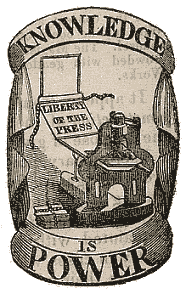President Obama opened a summit with American Indians here in Washington today, making good on a campaign promise to hold annual meetings with tribal leaders.
386 tribes were represented at the Tribal Nations Conference where Mr Obama signed a presidential memorandum requiring every cabinet agency to report back to the president on ways to improve the relationship between the federal government and tribal communities.
According to the White House today's meeting at the Department of the Interior was the largest and most widely attended gathering of tribal leaders in US history. Government officials planned to discuss problems facing the American Indians including the economy, education, health care, public safety, and the environment
"You will not be forgotten as long as I'm in this White House," Obama said during opening remarks at the all-day conference of tribal leaders and government officials.
Obama said the meeting is the largest and most widely attended gathering of tribal leaders in U.S. history. Officials planned to discuss problems facing American Indians, including economic development, education, health care, public safety and housing.
Given the government's history of reneging on agreements with Native Americans, Obama said it took an "extraordinary leap of faith" for leaders to attend the meeting. Obama said he is determined to be a good partner with tribal nation.
There are two problems with Obama's speech to the indians.
The Lakota Nation has withdrawn from all treaties with the United States, national leaders said Wednesday. “We are no longer citizens of the United States of America and all those who live in the five-state area that encompasses our country are free to join us,” Indian leader Russell Means told reporters and a delegation from the Bolivian embassy at a Washington news conference.
There are approximately 2,500 tribes and one broke away from the USA .
A delegation of Lakota leaders delivered a message to the US State Department on Monday 12/20.07, announcing they were unilaterally withdrawing from treaties they signed with the federal government of the United States.
They also visited the Bolivian, Chilean, South African and Venezuelan embassies, and will continue on their diplomatic mission and take it overseas in the coming weeks and months, they told the news conference.
The Lakota Nation includes parts of the states of Nebraska, South Dakota, North Dakota, Montana and Wyoming
The Indian Reorganization Act of 1934 provided for the formation of "tribal governments" under federal authority as vehicles for Indian "self-government." The Act provided a model of government based on democratic and corporate structures often at odds with the original forms of organization among indigenous nations. The New Deal abandoned some of the exercises of federal authority typical of the allotment era that preceded it. Thus establishing a separate Indian Nation!
Tribal councils established under the Indian Reorganization Act are regarded as vehicles of "tribal sovereignty"; they act as governments and not just as corporations.Indian nations are regarded as immune from suit without their consent, under the doctrine of "sovereign immunity.
The idea of indigenous sovereignty surfaced internationally and with intensity in the Draft United Nations Declaration on the Rights of Indigenous Peoples, E/CN.4/Sub. 2/1994/56, issued in 1994 as a report to the U.N. Commission on Human Rights. This document, which may eventually become the basis for an international protocol or convention, stirred up the ancient debates. The United States took an official position that the word "peoples" was inappropriate in a statement of "rights," because it implied group rights, which would threaten the sovereignty of states. The United States and others argued that "rights" adhere only to individuals, and that no group may be recognized as having any legal existence independent of a state. Indigenous nations, on the other hand, asserted that the Draft Declaration was meant to embody just such group rights, that these were essential for the survival of indigenous peoples worldwide.
Secondly, In 1987, the U.S. Supreme Court ruled (in the case California vs. Cabazon band of Mission Indians) that states had no authority to prosecute gaming conducted on Indian land. It was a huge victory for the tribes.
The Indian Gaming Regulatory Act (Pub.L. 100-497, 25 U.S.C. § 2701 et seq.) is a 1988 United States federal law that establishes the jurisdictional framework that governs Indian gaming. There was no federal gaming structure before this act. [1]The stated purposes of the act include providing a legislative basis for the operation/regulation of Indian gaming, protecting gaming as a means of generating revenue for the tribes, encouraging economic development of these tribes, and protecting the enterprises from negative influences (such as organized crime)[2]. The law established the National Indian Gaming Commission and gave it a regulatory mandate. The law also delegated new authority to the U.S. Department of the Interior and created new federal offenses, giving the U.S. Department of Justice authority to prosecute them.
The law has been the source of extensive controversy and litigation. One of the key questions is whether the National Indian Gaming Commission and Department of Interior can be effective in regulating tribal economic decisions related to Indian gaming. Senator John McCain is in favor of greater regulation, while a prominent professor in the field is skeptical that such regulation is effective.[3] Many of the controversies have produced litigation, some of it reaching the U.S. Supreme Court.
The National Indian Gaming Association (NIGA) is a non-profit organization founded in 1985 of 184 Indian Nations, with additional nonvoting associate members. The purpose of the NIGA is "to protect and preserve the general welfare of tribes striving for self-sufficiency through gaming enterprises in Indian country," and to "maintain and protect Indian sovereign governmental authority in Indian Country." The NIGA seeks to advance the lives of Indian people economically, socially, and politically. The NIGA's office building is located in Washington, D.C. The NIGA headquarters building was purchased by a tribal collective. It is the first structure to be owned by Native Americans in Washington, D.C The building was purchased with money from casino operations on Native American lands.
Native Americans today have a unique relationship with the United States of America because they can be found as members of nations, tribes, or bands of Native Americans who have sovereignty or independence from the government of the United States. Their societies and cultures still flourish amidst a larger immigrated American populace of African, Asian, Middle Eastern, and European peoples.Despite this fact, Native Americans who were not already U.S. citizens were granted citizenship in 1924 by the Congress of the United States.
American Indian and Alaska Native in combination 1.6 million are registered voters. This is 1.37% of the US population.
Through the years, Native Americans became US citizens by:
1. Treaty provision (as with the Mississippi Choctaw)
2. Registration and land allotment under the Dawes Act of February 8, 1887
3. Issuance of Patent in Fee Simple
4. Adopting Habits of Civilized Life(?)
5. Minor Children
6. Citizenship by Birth
7. Becoming Soldiers and Sailors in the U.S. Armed Forces
8. Marriage to a US citizen
9. Special Act of Congress
So it is easy to see this was just another "promise" speech to a minority voter group.
Friday, November 06, 2009
Subscribe to:
Post Comments (Atom)










No comments:
Post a Comment